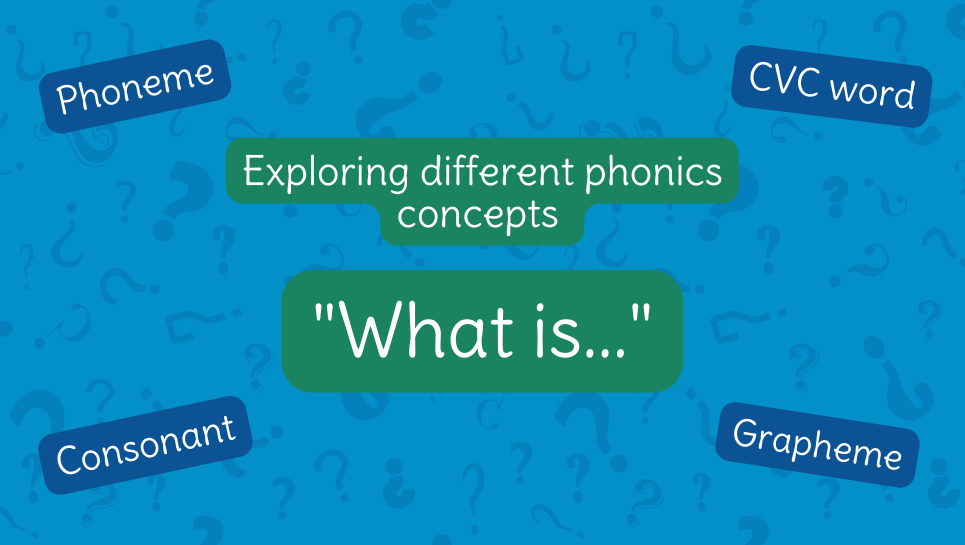In our ‘what is…’ series we’re taking things back to basics! From phonics to decoding, blending and more, we’re going to break things down and give you our expert advice on each area, to help answer any questions you may have around teaching reading.
***
A digraph is a two-letter spelling for a sound of speech (phoneme). The word has Greek roots: di- means ‘two’ and graph means ‘to write’. There can be two-letter spellings that represent consonant sounds. These are called consonant digraphs.
Common consonant digraphs are:
- ss, ff, ll, zz as in the words ‘fuss, puff, bell, and buzz’
- sh as in ‘ship’
- ch as in ‘chat’
- th (voiced) as in ‘this’
- th (unvoiced) as in ‘thin’
- ck as in ‘pick’
- ng as in ‘song’
- wh as in ‘when’
Less common but useful digraphs are:
- ph as in ‘phone’
- gh as in ‘laugh’
- wr as in ‘write’
- kn as in ‘know’
‘qu’ is often presented as a digraph as this spelling pattern is common, but it is not a digraph because it represents two separate sounds /k/ and /w/.
Two-letter spellings can also represent vowel sounds. These are called vowel digraphs.
There are many vowel digraphs. Here some common examples:
- ai as in ‘rain’
- ee as in ‘bee’
- oa as in ‘goat’
- ur as in ‘fur’
- ow as in ‘how’
- oo as in ‘moon’
- aw as in ‘claw’
- ie as in ‘tie’
- oi as in ‘oil’
What are split vowel digraphs?
Split vowel digraphs are spelling patterns also known as VCe, Bossy e and Magic e. The shorthand for this spelling is a-e, e-e, i-e, o-e and u-e. In many phonics programmes this spelling is taught as a two-letter spelling (digraph) that is split, e.g., in the word ‘came’, the ‘ae’ spelling was split and the ‘e’ placed at the end of the word. Some programmes describe these vowel sounds as ‘long vowel’ sounds. Bossy or Magic e present this as the ‘e’ changing the vowel sound from a ‘short vowel’ sound, e.g., /a/ as in the word ‘pal’ to a ‘long vowel’ sound /ae/ as in the word ‘pale’.
Here are the split vowel digraphs:
- /a-e/ as in the word ‘came’ (sound /ae/)
- /e-e/ as in the word ‘theme’ (sound /ee/)
- /i-e/ as in the word ‘time’ (sound /ie/)
- /o-e/ as in the word ‘bone’(sound /oe/)
- /u-e/ as in the word ‘flute’ (sound /oo/)
- /u-e/ as in the word ‘cute’ (sound /ue/)
Why is this important?
The English writing system is complex and must be taught in a systematic and explicit way. Educators need to understand how it works to teach it effectively. The concept of two letters spelling one sound (digraphs) is usually taught after the introduction of the sounds of the alphabet where one letter represents a sound. In the English writing system sounds can be represented by 1–4 letters. Learning about digraphs is the first step in this conceptual understanding.
Check out our Phonic Infographics: Phonics explained to learn more!


